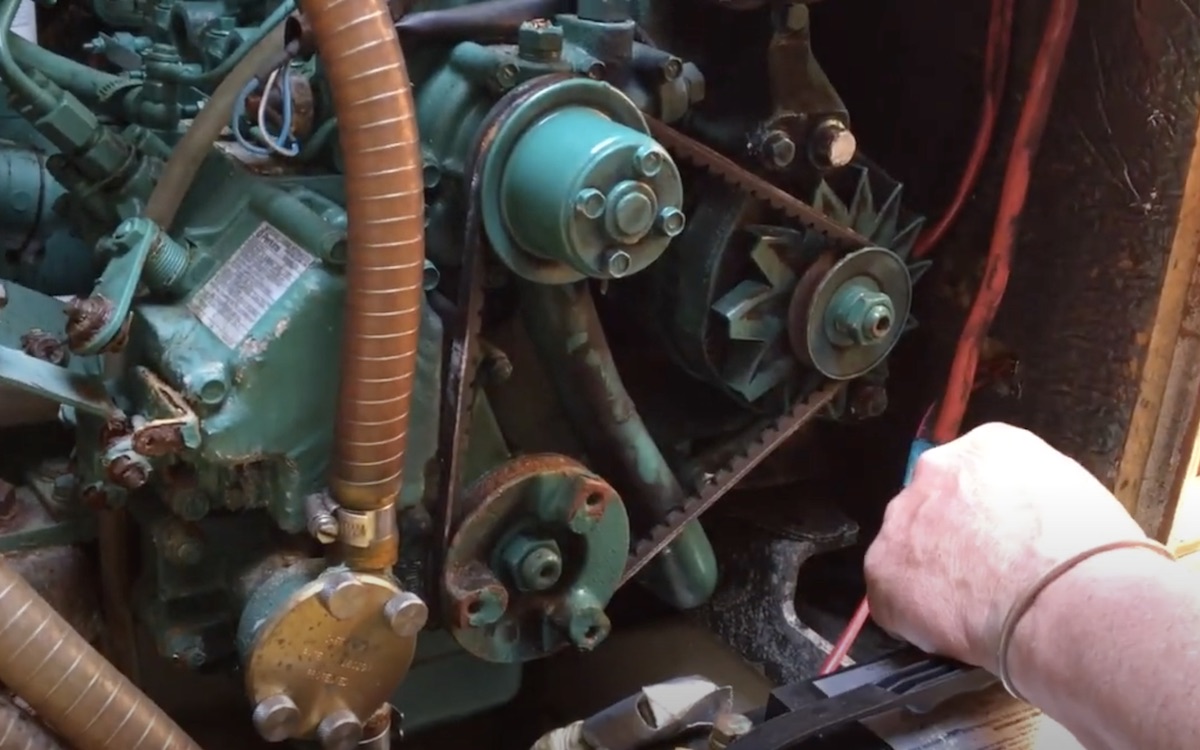Anne Cees Houtman has a problem with a loss of engine power under load. PBO's engine whisperer, Stu Davies thinks he has the answer
Loss of engine power under load: expert advice to solve the problem
I have a Rival 34 that was kept in the IJsselmeer in the Netherlands for years, but she’s now been in Greenock since 2021.
I try to keep her afloat over the winter. The hull was Coppercoated in 2021, including the Autostream feathering prop.
She was refitted with a Volvo Penta D1-20 by a previous owner.
I haven’t been able to sail as much as I’d like recently, and I noticed green fouling building up on the waterline over the spring/summer.
When I finally got out again after two months’ inactivity I noticed the engine wouldn’t rev beyond 2,000rpm in ahead, although it ran pretty smoothly with no change in revs underway.

New and original exhaust elbows look similar…
I didn’t notice any smoke or exhaust colour change.
I reckoned it must be the fouling that slowed us down with the engine unable to cope with increased resistance, so I had her lifted and marina staff jet-washed the hull and cleaned the prop.
To my surprise this made no difference to the engine’s performance.
Tied alongside she’d give 2,100rpm maximum in ahead, and 2,400rpm in astern, while easily going up to 3,500 rpm when in neutral.
I checked out the feathering prop, but that seemed to be working.

but Chinese-manufactured exhaust elbow (left) has a smaller diameter outlet than the original coked-up unit
Then I wondered whether the engine might suffer from clogged filters, so I replaced fuel (no diesel bug or water observed) and air filters: again, no change in performance.
I next removed the exhaust elbow which showed some coking: perhaps time for replacement?
I ordered an attractively-priced elbow and was a little dismayed to find it was ‘made in China’ but more so by the fact the actual exhaust diameter was the same as my coked-up original!

The original coked up exhaust elbow. Is it the reason for the loss of engine power?
Both internal diameters are just over 3cm while the original must have been 1cm larger, at least.
Presumably the 3cm diameter must be enough to allow unimpeded gas outflow and not restrict engine performance.
If that’s the case my coked-up exhaust elbow wouldn’t explain the lack of revs under load. Or would it?
Anne Cees Houtman
Stu Davies replies:
You’ve tried lots of thing already, so let’s go back to basics.
Blocked exhaust elbows? They have to be really blocked to affect engine performance – maybe down to a 1cm hole – but yours wasn’t that bad, and the Chinese copy elbow should work OK.
If the hull is fouled enough to slow the boat and affect the achieving of peak revs from the motor, then black smoke will be evident.
Diesel engines work by injecting more fuel to achieve more power.
The throttle sets the revolutions, the governor, by allowing more fuel to be injected, sets the power.
If the rpm is restricted by anything physical then the excess fuel set by the throttle and allowed by the governor isn’t burned and black smoke is the result.
Reaching peak rpm without a load, ie in neutral, doesn’t mean anything, as no power or lots of fuel are needed to spin the engine to max revs out of gear.
Trying to achieve max revs in gear tied up will not work either, I’m afraid.
The propeller needs to be moving through the water to achieve maximum efficiency and rpm.
So your symptoms are: not enough revs but no black smoke – a classic case of not enough fuel available.
You say you’ve checked the fuel system and changed the filters, but have you checked the pipes from the tank to the lift pump?
Continues below…
How to: troubleshoot your diesel engine electrics
Even when you’ve done all your normal pre-departure checks, sometimes the engine still just won’t start. If you have ever…
How to service your marine diesel engine
The unique challenges of the marine environment mean regular engine servicing is essential for any boat owner. Winter is the…
How to service a marine diesel engine in 12 simple steps
It was time to service the marine diesel engine on our Maxi 84 cruiser. Knowing how to diagnose and fix…
How the diesel engine works – take a look at Maximus’s Volvo saildrive
Checking the diesel engine after a long lay-up is an essential task before launching any boat, says marine surveyor Ben…
There could be a blockage not allowing sufficient fuel to flow.
The bottom of the stack pipe could be partially blocked by sticky black diesel bug residue.
It’s interesting you note the revolutions are different between forward and astern.
So another simple check is to see if you’re getting maximum throttle position on the injector pump with the throttle lever set both ways.
I’d do the easy bit first – check the throttle is going to maximum on the pump both ways.
If not, adjust it. If that’s OK, then go to the tank and remove the stack pipe etc and check for blockages.
Enjoyed reading Loss of engine power under load: expert advice to solve the problem?
A subscription to Practical Boat Owner magazine costs around 40% less than the cover price.
Print and digital editions are available through Magazines Direct – where you can also find the latest deals.
PBO is packed with information to help you get the most from boat ownership – whether sail or power.
-
-
-
- Take your DIY skills to the next level with trusted advice on boat maintenance and repairs
- Impartial in-depth gear reviews
- Practical cruising tips for making the most of your time afloat
-
-








